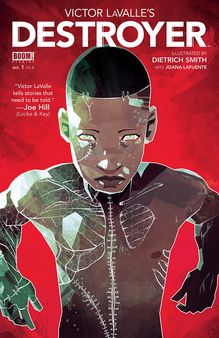Victor LaValle Resurrects Frankenstein in Socially Conscious New Comic, Destroyer
Main Art by Micaela Dawn Comics Features Victor LaValle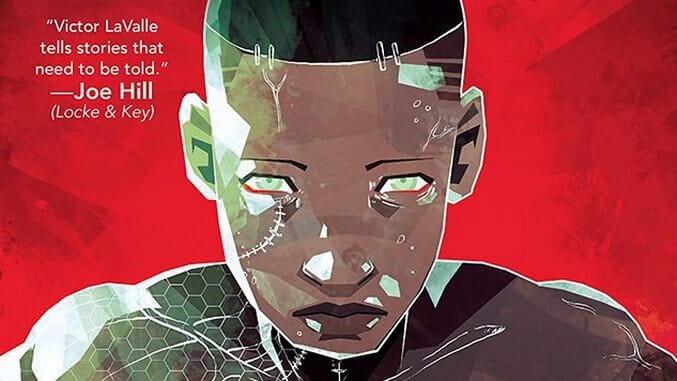
Author Victor LaValle abounds with monsters. His novel Big Machine chronicles the actions of a secret society investigating mysterious creatures that defy logic, while his acclaimed novella The Ballad of Black Tom riffs on the cosmic horror of H.P. Lovecraft as it critiques the racism that frequently appears in the horror icon’s oeuvre. It’s no suprirse that LaValle’s latest project, a collaboration with artist Dietrich Smith, finds a unique take on one of the most classic monsters of all.
With his new project, Destroyer, LaValle joins the ranks of writers with one foot in prose and the other in comics. (See also: G. Willow Wilson, Joe Hill, Mat Johnson and Samuel Sattin.) The comic, whose first issue debuts this week via BOOM! Studios, offers a new update on Mary Shelley’s classic goth icon—in the opening scene, a whaling vessel ends the centuries-long isolation of Frankenstein’s Monster from society. But it also swerves into the modern friction of race, police violence and identity, as a brilliant scientist, Dr. Baker, attempts to resurrect her fallen son through future-forward technology.
Paste emailed with LaValle to learn more about the origins of Destroyer and the themes that appealed to him the most. ![]()
Paste: A lot of your recent fiction has also explored questions of horror and what makes a monster a monster. What makes the story in Destroyer best suited to comics rather than to prose?
Victor LaValle: This time around I thought we could do a lot more with the monsters, things that just couldn’t be done with prose. In particular, I wanted to offer a pretty different take from what’s become the more usual Frankenstein’s Monster image. Of course, Boris Karloff’s version has had an enduring appeal, but then there have been the slightly more human-looking ones. I’m thinking of that I, Frankenstein movie. The great Bernie Wrightson came up with an all-time beauty long ago. In my case I told the artist who designed the creature—Dan Mora—that I wanted a creation that was a mix of Iggy Pop and Moses. And he did give me exactly that. It was the kind of thing I might spend 10 pages trying to describe, but one image of that bad boy and you get it. I wanted to see how much more we could do.
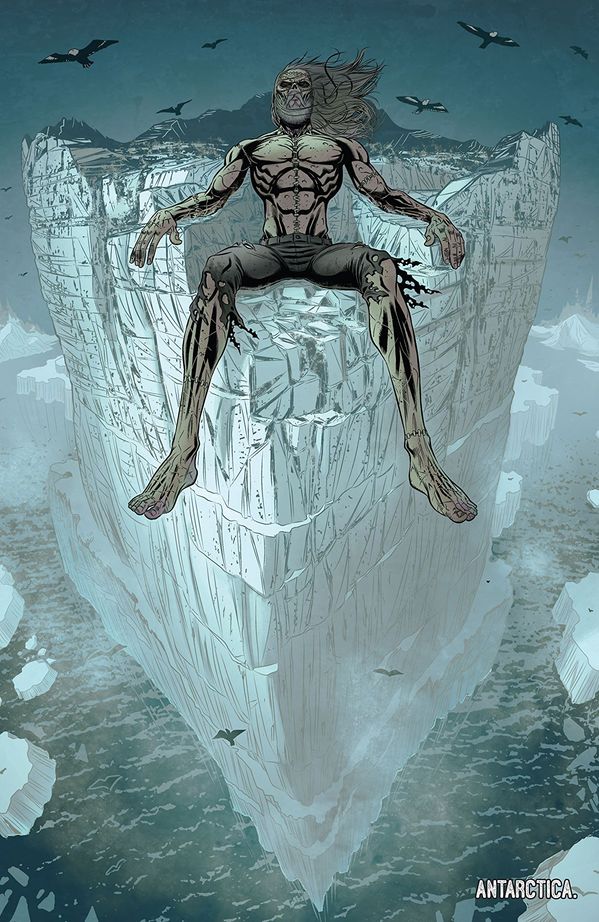
Victor LaValle’s Destroyer #1 Interior Art by Dietrich Smith and Joana LaFuente
Paste: In the first issue, you make it very clear that the Monster’s sense of morality doesn’t line up with human concepts of [morality]. What were some of the challenges of writing a character who interacts with the world in a somewhat alien way?
LaValle: I don’t think the Monster’s morality is all that alien. He’s a misanthrope. He hates humanity because he believes humanity kills everything that crosses its path. And I can’t say he’s wrong. Part of the thrill of writing his character was letting my most anti-human impulses fly free. We tend to think that if we have good intentions we should be absolved of the real-world harm we cause others. I didn’t mean for anything bad to happen! That kind of thing. But the Monster doesn’t give a shit about anyone’s reasons. He only sees our effects. And he’s had enough of us. He’d like to see every human being wiped from the face of the Earth because then the place might run a lot better. I’ll bet there are a fair number of human beings who think the same way.
Paste: At the same time, Dr. Baker’s reaction to grief and desire to make things right after the death of her son come from a very human, moral place. Do you see these potentially conflicting approaches to life as the central conflict of the book?
LaValle: Well, I’m glad Dr. Baker’s impulses seem more relatable. They do come from a place of grief. But even though her impulses are more understandable, that doesn’t mean the results will be any less wholesome than the Monster’s. She’s motivated by grief, but also by rage. She’s very angry about what happened to her son. And as a result, she’s vulnerable to the same impulse to do harm to the world. This was one of the things I wanted to explore: the distinction between our intent and our actions. How much slack does a good heart buy a person? And why do we cut others less slack if the results are much the same?
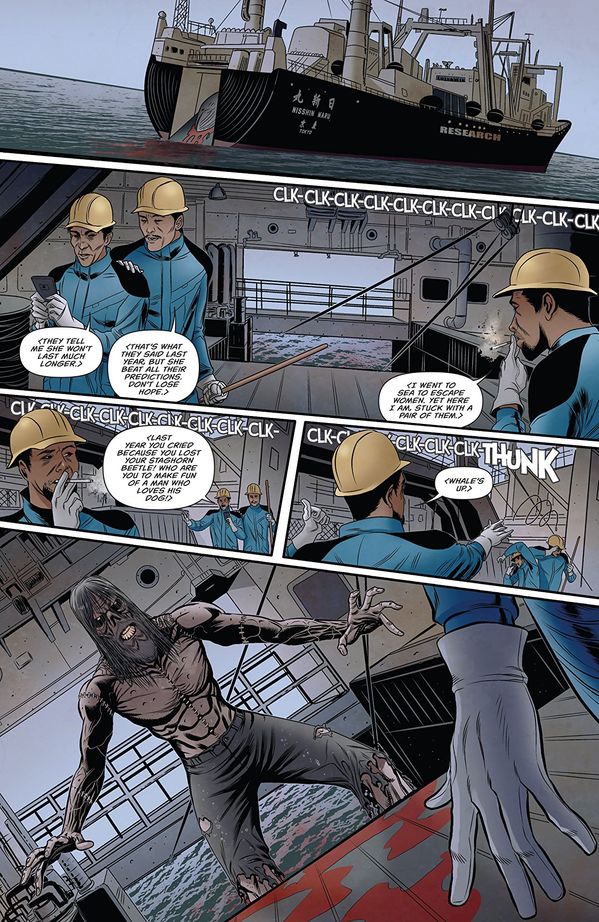
Victor LaValle’s Destroyer #1 Interior Art by Dietrich Smith and Joana LaFuente
Paste: Destroyer is set in a world in which Victor Frankenstein’s experiments led to the formation of what appears to be a secret society. How much backstory for it, if any, did you need to sketch in as you began to write the series?
LaValle: My editors at BOOM!, Eric Harburn and Chris Rosa, worked with me for a good while to hammer out a broad arc for the whole six-issue story, and to fill out the backstory issue like the organization that is hunting down Dr. Baker and the Monster. The Lab is certainly meant to tie into the Frankenstein storyline and Victor’s experiments. They have been tracking down the Monster, and the secret of eternal life, for a very long time.
Paste: There are some striking visuals here, including the bloody handprint on Dr. Baker’s lab apron. Where in the process did elements like that come up?
LaValle: Thanks for noticing that. Details like that came about while I was writing the script. The way things work is that I send a first draft to Eric and Chris and they bounce it back with some suggestions and questions. As I read through the second draft, I feel surer of the story moments and that leaves time for me to suggest little details like the handprint on her belly. I thought it would be haunting and creepy. There are also a ton of literary references in the comic, many of them leading directly to Mary Shelley’s Frankenstein. For instance, the name of the “Greenpeace”-type ship at the beginning of the issue is the Robert Walton; that’s the name of the narrator in Shelley’s novel. And the woman who leads the Lab, the secretive government organization, is absolutely meant to look like (and think like) the founder of Objectivism. That stuff was incredibly fun to pepper throughout the book.

Victor LaValle’s Destroyer #1 Interior Art by Dietrich Smith and Joana LaFuente
Paste: Once the action of the first issue leaves Antarctic waters, it moves to Maryland and Montana. What drew you to those two states in particular?
LaValle: Maryland was easy because I wanted the government organization to be hiding in plain sight, working under the umbrella of a nationally recognized federal organization. That’s going to mean it’ll be located somewhere around there. As for Montana, I just spent some time there once a few years back and I thought it was beautiful country. Also, the sense of it being remote and rugged served well for a scientist who might want to disappear so she could carry out her private experiments.
Paste: Besides Frankenstein, there are other pop culture references incorporated into the first issue, including Josephine Baker’s name and the Little House on the Prairie sign hanging outside of her lab. How do you best determine if you’re going to add a reference to something else into the main body of the storyline?
LaValle: As I mentioned earlier, some of them are direct references to the Frankenstein mythos. Those were the easiest to include because they had obvious ties to this story. Others felt more like nods that would make sense with a little more thought. I referenced Little House on the Prairie because I liked thinking of Josephine as a kind of cousin to Laura Ingalls Wilder, plucky and smart and brave. As for the Josephine Baker reference, I liked using her because I think many people know of her as the talented dancer and actress, but she also worked diligently on behalf of the Civil Rights Movement in the United States and aided the French Resistance during World War II. In other words, she was no joke. I wanted to honor that aspect of her nature with the reference.
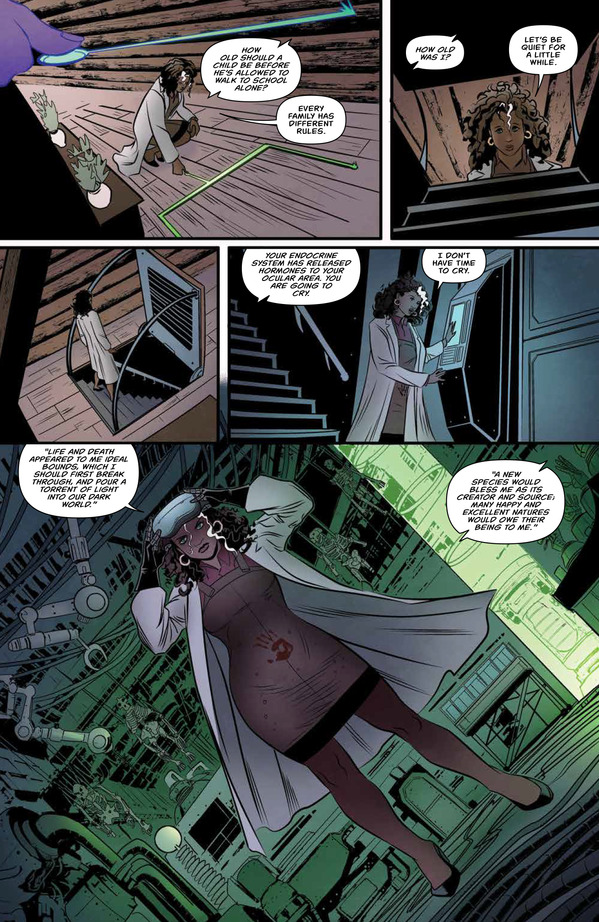
Victor LaValle’s Destroyer #1 Interior Art by Dietrich Smith and Joana LaFuente
Paste: In the text in the back of the book, you wrote about encountering the story of Frankenstein on screen before you read Mary Shelley’s novel. Were there any cinematic takes on the story that were particularly influential for this comic?
LaValle: I’d say that Bride of Frankenstein was more of an influence than the original, if only because Bride is actually a much better, smarter, weirder movie. First, it’s got the overt appearance of Mary and Percy Shelley and Lord Byron, too, so it leans into its literary references. Then you’ve got a much angrier, more violent monster. There’s the nefarious Dr. Pretorius. And, of course, the Bride. It’s that mix of intelligence and high pulp that I wanted to access in the comic. Probably more than any other single movie, it’s Bride of Frankenstein that helped spawn that point of view.
Paste: Do you have plans for other stories in the medium once Destroyer has concluded?
LaValle: We’ll see how things go, but I’ve got more stories in mind for the Destroyer characters and world. Maybe there will be a chance to keep telling more of them, maybe not, but I definitely know where else I’d take things. I’ve also got some other ideas in mind for stuff that might be a lot of fun. I’m hooked on what comic books can do.
